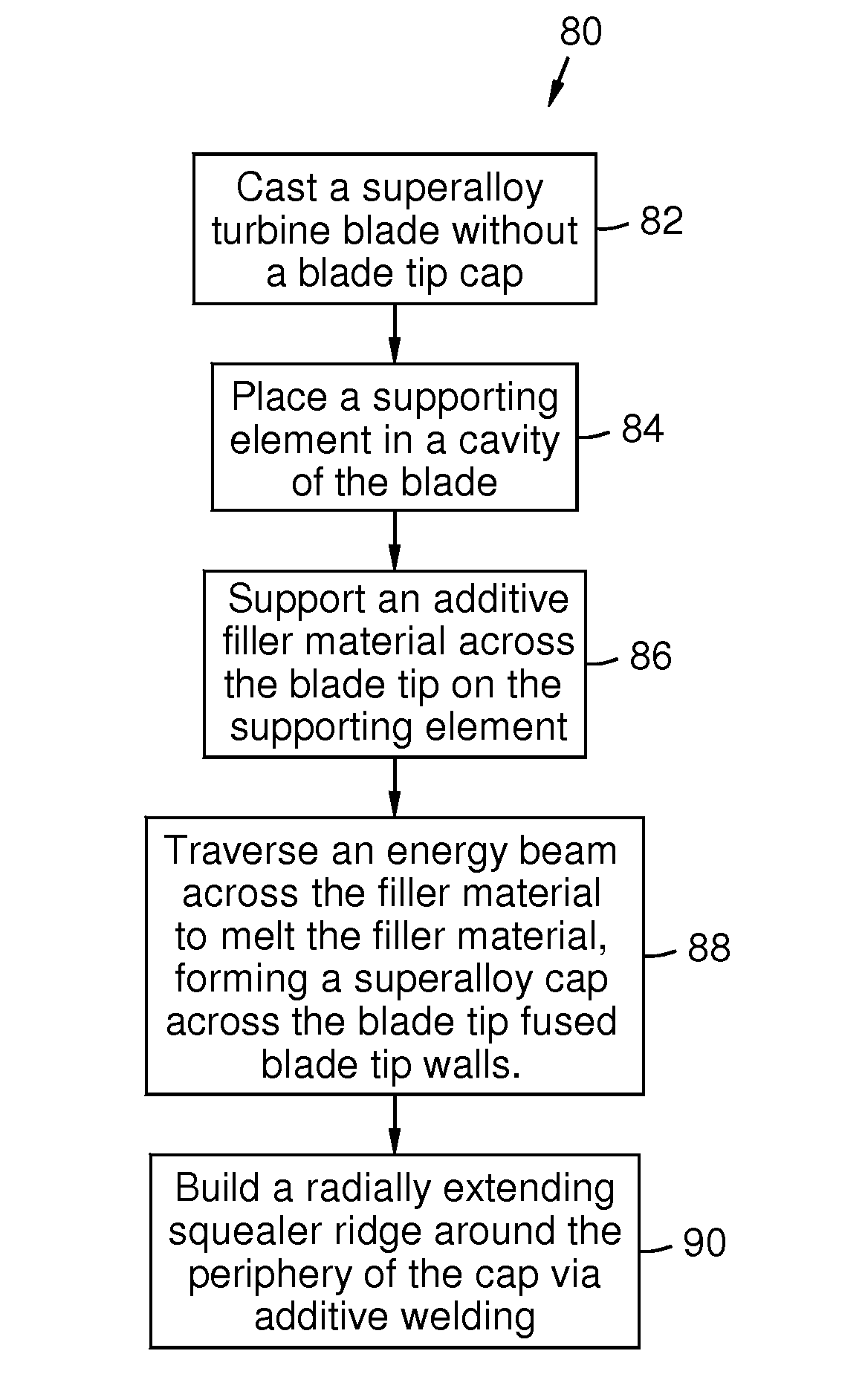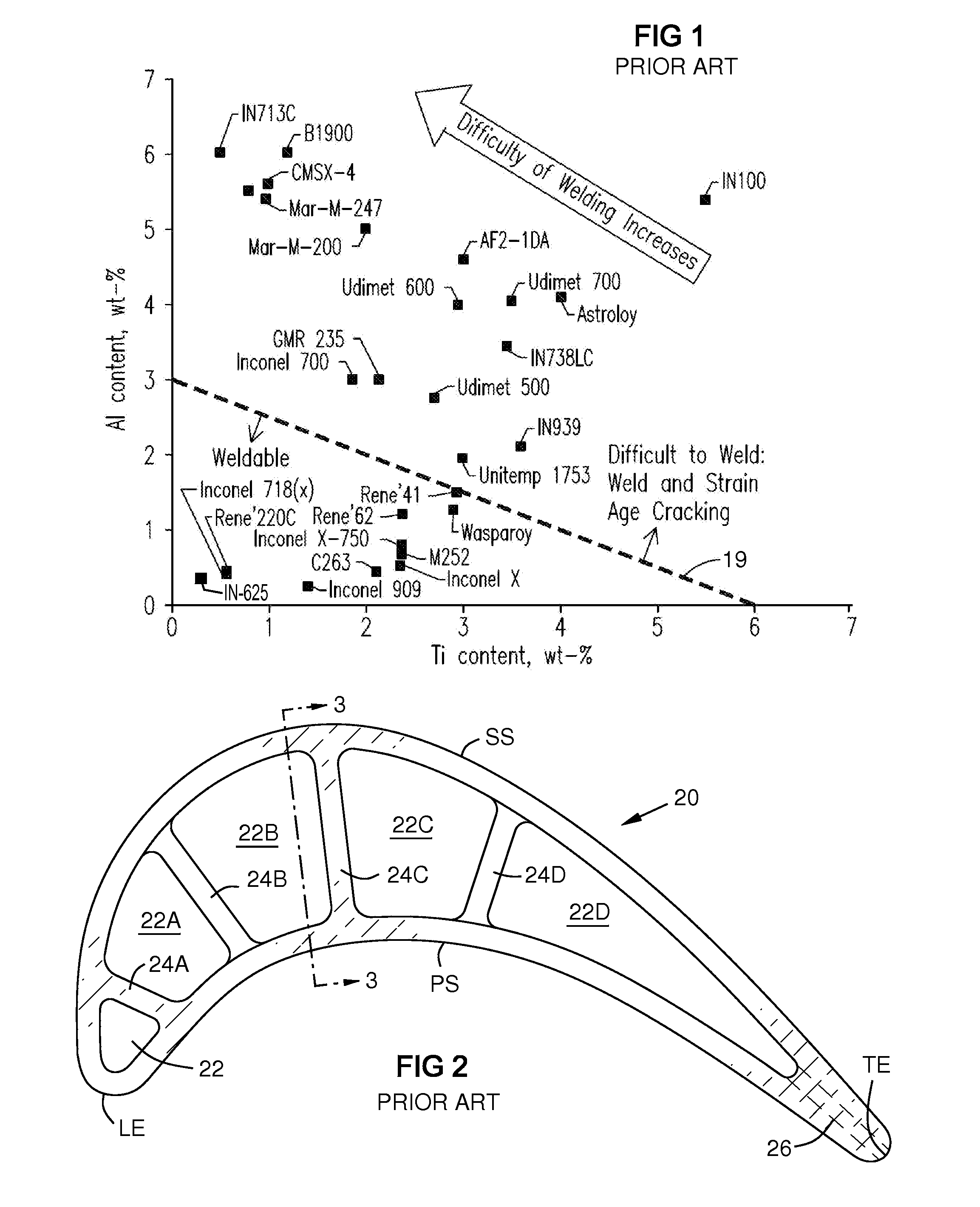Building and repair of hollow components
a hollow component and hollow technology, applied in the field of metal joining and additive manufacturing, can solve the problems of superalloy materials being among the most difficult materials to weld, the most difficult to weld, and the casting of a closed blade tip
- Summary
- Abstract
- Description
- Claims
- Application Information
AI Technical Summary
Benefits of technology
Problems solved by technology
Method used
Image
Examples
Embodiment Construction
[0024]The present inventors have created a process of building a tip cap on a hollow superalloy turbine blade or closing another opening in a component by supporting a filler material across the opening on a supporting element in a cavity of the component, and then traversing the filler material with an energy beam to melt it, forming a deposit across the opening fused to the edges of the opening. The filler material may be a powder that includes metal and may further include flux. It is supported across the opening by a fugitive supporting element behind the opening. “Fugitive” means removable after melting and cooling of the metal, for example by a mechanical process, by fluid flushing, by chemical leaching and / or by any other known process capable of removing the fugitive material from its position. The supporting element may be a powder and / or other form of material disposed in a cavity behind the opening. Examples include additional filler powder and / or flux or ceramic powder. ...
PUM
| Property | Measurement | Unit |
|---|---|---|
| thickness | aaaaa | aaaaa |
| heat | aaaaa | aaaaa |
| energy | aaaaa | aaaaa |
Abstract
Description
Claims
Application Information
 Login to View More
Login to View More - R&D
- Intellectual Property
- Life Sciences
- Materials
- Tech Scout
- Unparalleled Data Quality
- Higher Quality Content
- 60% Fewer Hallucinations
Browse by: Latest US Patents, China's latest patents, Technical Efficacy Thesaurus, Application Domain, Technology Topic, Popular Technical Reports.
© 2025 PatSnap. All rights reserved.Legal|Privacy policy|Modern Slavery Act Transparency Statement|Sitemap|About US| Contact US: help@patsnap.com



